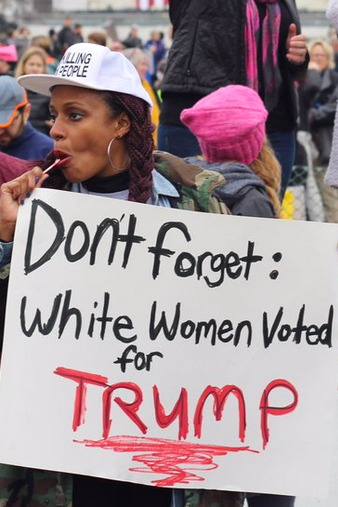Thousands of women around the country descended on Washington D.C. Saturday to attend the 2nd annual Women’s March. But many black women have made it clear that they will not to attend this year’s historic event, nor the smaller marches taking place around the country.
“The reason I’m not going is because after having attended the march last year, I am well aware that the Women’s March is not for women like me,” writer S.T. Holloway said in an op-ed for the
Huffington Post.
She added: “It represented the continued neglect, dismissal and disregard of the issues affecting black women and other women of color.”
The inaugural Women’s March drew an estimated 4.9 million people on Jan. 21, 2017, according to the national Women’s March website. But women of color and trans women have complained about the lack of inclusion, and the general disregard of the issues that affect them. The march, many criticized, focused too much on the needs of cis white women.
Many black women also felt betrayed by the 53% of white women voted for President Donald Trump, but they still showed up with posters and chants in support of the movement.
This year, Holloway is not alone in her sentiments as black women have made their feelings clear on social media.
But Tamika Mallory, one of the Women’s March organizers says black women should attend, despite their issues with the movement. Organizations like
Not Without Black Women are traveling to Washington to make sure that black women’s presence is felt on Saturday.
“If we’re going to sort of change what feminism looks like, its not going to happen because we asked white women to do it,” Mallory told
the Grio. “We have to bust the door down and show up and take over.”
Mallory, alongside Carmen Perez and Linda Sarsour, was brought on to join the Women’s March leadership last year’s when the almost all-white organizers were criticized for their lack of inclusion. She told
USA Today that this year, organizers were more conscious about their past issues.
“I think also something that we learned last year is that the women’s march is sort of a microcosm of what is happening in the world,” she said. “We’re looking through our organization and figuring out where diversity is a problem even within the network, where we have chapters that are mainly led by white women and there needs to be an intentional effort to bring women of color into those particular networks.”


